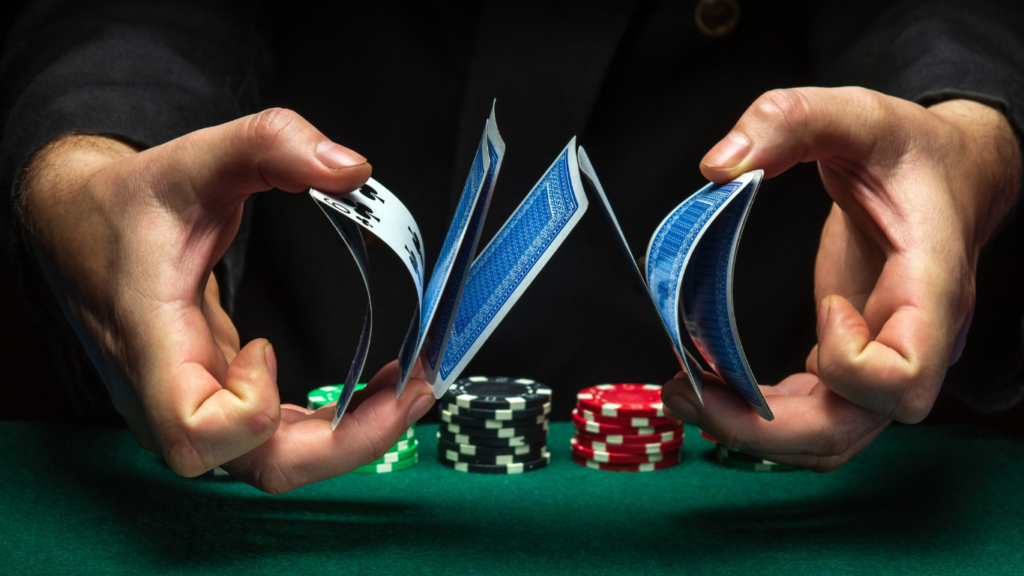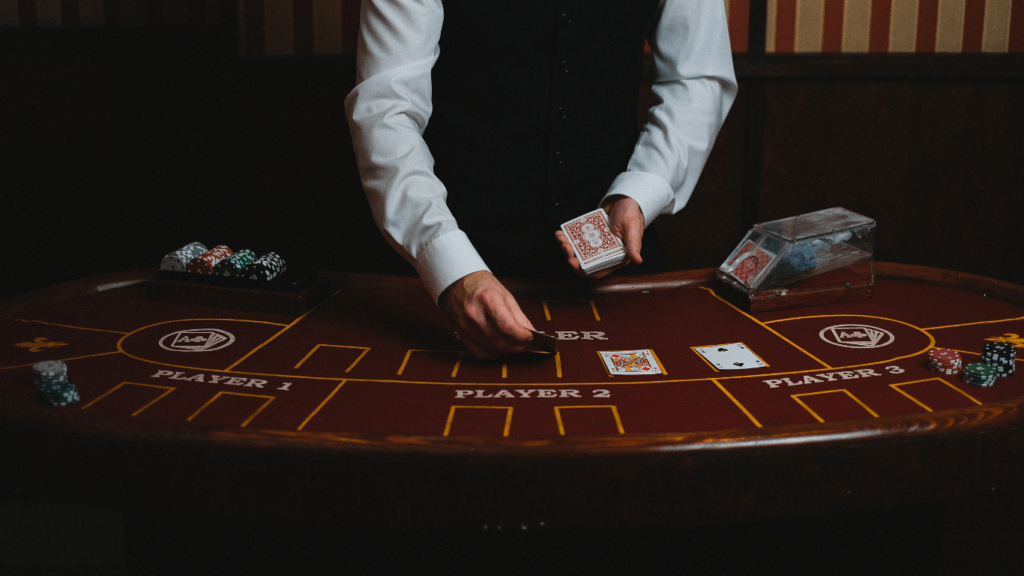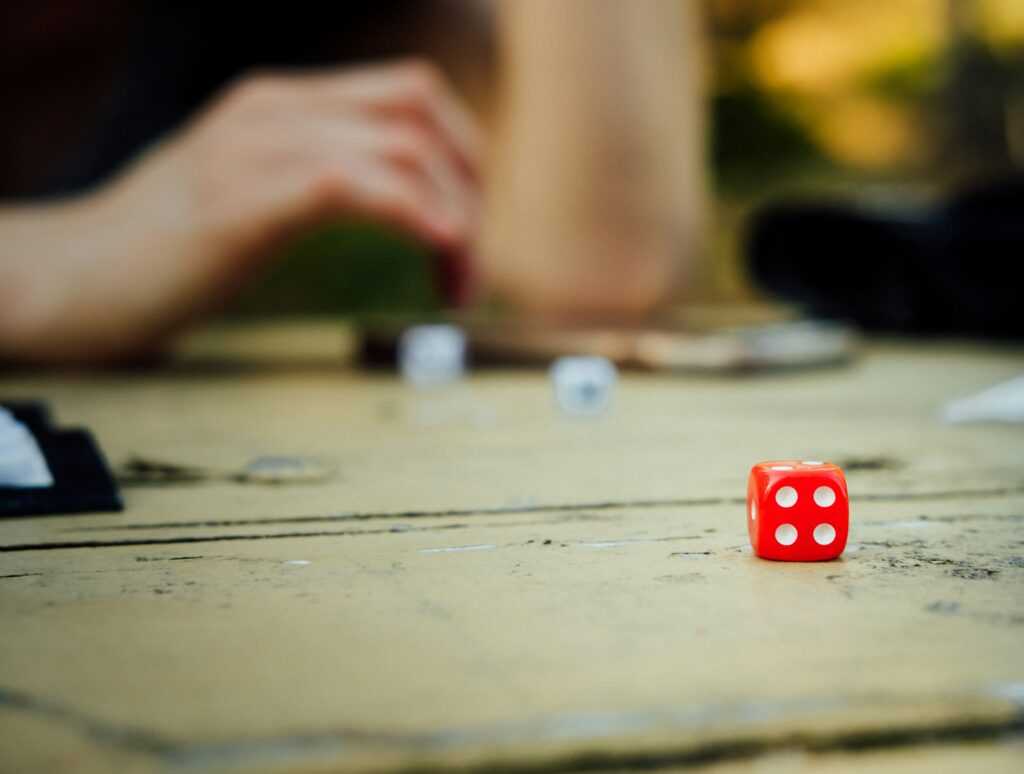Understanding the House Edge
Recognizing the house edge is essential when selecting table games in a casino. It directly influences your potential success and shapes your strategy.
Definition of House Edge
The house edge represents the casino’s statistical advantage over players in any given game. It’s expressed as a percentage indicating the expected loss relative to your initial bet. For instance, if a game has a house edge of 5%, this means you’re expected to lose $5 for every $100 wagered over time. This metric offers a clear measure of how favorable or unfavorable a game is for players.
Importance in Casino Games
In casino games, the house edge dictates the long-term profitability for the establishment and signifies the potential risks for players. A lower house edge, as seen in games like:
- blackjack
- baccarat
generally improves your odds of winning. When selecting games, opting for those with a lower edge allows for a more strategic approach to gambling. Awareness of this metric not only impacts immediate betting decisions but also influences bankroll management and gaming longevity.
Popular Table Games Analyzed
Exploring different table games can reveal which offer the best chance of winning. By examining key games, it’s easier to identify those with lower house edges.
- Blackjack
Blackjack offers one of the lowest house edges, around 0.5% with optimal strategy. Players make decisions that directly influence outcomes. Employing basic strategy, like when to hit or stand, can minimize losses. Casinos usually provide a competitive environment with varied rules, affecting the edge slightly.
- Roulette
Roulette’s house edge varies by version: European (2.7%) and American (5.26%). The difference stems from the additional double-zero slot in American roulette. Players can increase their odds by choosing the European version. Betting types, such as outside bets, also influence the probability of winning.
- Craps
Craps features a house edge ranging from 1.36% to 5% based on bet type. The Pass Line bet, commonly chosen by players, has a 1.41% edge. Skilled players often back up their initial bets with odds bets, which have no edge, improving overall odds.
- Baccarat
Baccarat is straightforward with a house edge of 1.06% on banker bets. The simplicity of this game contributes to its popularity. Avoiding the tie bet, with a much higher edge, is advisable. The game’s low house edge benefits both high-rollers and casual players.
- Poker
Poker differs as it pits players against each other rather than the house. Casinos earn via rake, a small percentage of each pot. Skill level and table dynamics significantly impact potential winnings. Poker’s lack of a fixed house edge requires strategic thinking and adaptability.
House Edge Comparison Across Games

Understanding the house edge variations among table games helps you choose the best options, maximizing your chances of success. Some games offer a lower house edge, providing a better opportunity for strategic play, while others have a higher edge.
Low House Edge Games
Games with a low house edge enhance your strategic potential. Blackjack stands out with a house edge as low as 0.5% when employing optimal strategy. Its decision-influencing aspect allows skilled players to turn the odds somewhat in their favor over time. Baccarat offers a 1.06% house edge on banker bets, maintaining simplicity in its gameplay yet allowing strategic choice. Additionally, the Craps Pass Line bet provides a low house edge of 1.36%, making it an appealing option for those who prefer a game with favorable odds.
High House Edge Games
In contrast, some games present a greater challenge due to a higher house edge. American Roulette features an edge of 5.26%, making it harder for players to achieve long-term wins compared to its European counterpart with a 2.7% edge. Certain Craps bets, aside from the Pass Line, elevate the house edge up to 5%, affecting the overall potential for significant gains. These games require careful consideration due to their inherent advantage leaning toward the casino, and they might serve better as entertainment rather than strategic endeavors.
Strategies to Lower the House Edge
Understanding how to strategically lower the house edge can significantly enhance your chances of winning. Let’s explore methods for improving your odds in popular table games.
Card Counting in Blackjack
Card counting in blackjack can dramatically reduce the house edge, potentially flipping the odds in your favor. By tracking the ratio of high to low cards remaining in the deck, you can make more informed betting decisions. This technique requires practice and concentration, as the goal is to adjust your bets as the deck composition changes. While casinos discourage card counting, it’s a legal and effective strategy for increasing your advantage.
Bet Sizing in Craps
In craps, adjusting your bet sizes helps manage risk and maintain a lower house edge. The Pass Line bet offers a 1.36% house edge, making it a popular choice. By using odds bets in conjunction with Pass Line bets, you effectively reduce the house edge to nearly zero. It’s crucial to have a disciplined betting strategy, allocating portions of your bankroll for progressive bet sizing while avoiding higher-edge wagers like the Any 7 bet.
Optimal Betting in Baccarat
In baccarat, optimal betting means consistently choosing the banker bet, which carries a house edge of just 1.06%. Although the game offers three betting options—banker, player, and tie—the banker bet remains the most advantageous choice. Sticking to banker bets over time increases your likelihood of minimizing losses and maximizing returns. Remember not to be swayed by perceived patterns and focus on the statistical advantage of the banker bet.



 Lead Content Strategist
Willie Maxson is the Lead Content Strategist at Dice Gamblers Deal, where he leverages his extensive knowledge of gambling and content creation to produce educational and engaging material for players at all skill levels. Willie’s background in journalism, combined with a deep understanding of casino games, allows him to break down complex gambling strategies into clear, digestible content that helps readers master the art of winning at the tables. From detailed blackjack strategies to the best slot machine tips, Willie creates resources that provide valuable insights into the world of gambling. His approach is centered around making learning fun and accessible, with content that’s as enjoyable as it is informative. He works closely with the team to ensure that every article, guide, and update on the website is of the highest quality, empowering players to make more informed decisions and ultimately increase their winnings.
Lead Content Strategist
Willie Maxson is the Lead Content Strategist at Dice Gamblers Deal, where he leverages his extensive knowledge of gambling and content creation to produce educational and engaging material for players at all skill levels. Willie’s background in journalism, combined with a deep understanding of casino games, allows him to break down complex gambling strategies into clear, digestible content that helps readers master the art of winning at the tables. From detailed blackjack strategies to the best slot machine tips, Willie creates resources that provide valuable insights into the world of gambling. His approach is centered around making learning fun and accessible, with content that’s as enjoyable as it is informative. He works closely with the team to ensure that every article, guide, and update on the website is of the highest quality, empowering players to make more informed decisions and ultimately increase their winnings.
